September 9, 2018
Media Attempts to Sabotage Botham Jean's Reputation
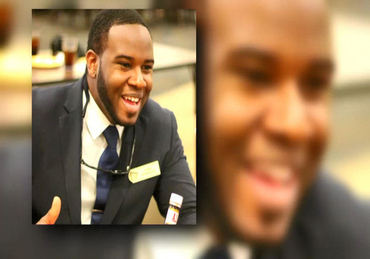 Botham Shem Jean, a risk assessment associate at PrincewaterhouseCoopers, was shot and killed in his home by off-duty Officer Amber Guyger. While much is still unknown, many are outraged by the way the media and police have been handling the case so far. Botham Shem Jean, a risk assessment associate at PrincewaterhouseCoopers, was shot and killed in his home by off-duty Officer Amber Guyger. While much is still unknown, many are outraged by the way the media and police have been handling the case so far.
A Fox 4 News affiliate is under fire after publishing an article with the headline, “Developing: Search warrant: Marijuana found in Botham Jean’s apartment after deadly shooting”.
This continues the media’s practice of criminalizing black victims of police shootings, even in death. News outlets have often shared mugshots of Black shooting victims rather than more relatable and humanizing images such as graduation or family photos. These stereotypical images work to pigeon-hole black victims as dangerous, susceptible to violence, and undeserving of sympathy.
Lee Merritt, an attorney for Jean’s family said,
“They went in with the intent to look for some sort of criminal justification for the victim,” Merritt said. “It’s a pattern that we’ve seen before … we have a cop who clearly did something wrong. And instead of investigating the homicide — instead of going into her apartment and seeing what they can find, instead of collecting evidence relevant for the homicide investigation — they went out specifically looking for ways to tarnish the image of this young man.”
HOW IS THIS RELATED TO STRUCTURAL RACISM?
By criminalizing black victims, the media is reinforcing negative stereotypes of the black community.
Myths and stereotypes founded on racist ideologies can not only be deadly for black men, women, and children, but they also ensure that sympathy and justice remain elusive for black victims killed by law enforcement.
The criminalization falsely justifies violence towards black bodies. It not only increases fear and distrust among racial groups, but it also impacts how the judicial system treats white offenders accused of committing violent crimes on black men, women, and children.
For me see, " A Fox Station in Dallas is Being Accused of Helping Police Smear a Black Man who Was Killed By a Cop Inside His Home "
August 6, 2018
Why it takes Beyoncé to get a black photographer on the cover of US Vogue

For the first time in its 126 year history, Vogue hired a black photographer to shoot the magazine's cover image. Why now? Unfortunately, this historic decision wasn't initiated by Vogue, but rather mega-star Beyonce. In addition to being the on the cover of the prestigious September issue, Beyonce and her team took over the creative direction of her entire story, which included hiring black, 23-year old Tyler Mitchell to shoot the cover.
In an article for The Guardian, 19-year old David Uzochukwu, who is also a black photographer, explains how important it is to have other people of color in the fashion industry. He said that he got to shoot FKA twigs because he was found online by other black creatives. He further explains "It's still early days for me but I know for sure that having that support is a super-important aspect if you are not white. Things would have been so different if I didn't have that sort of community willing to use me."
HOW DOES THIS CONNECT TO STRUCTURAL RACISM?
Fashion has a huge role in society to define culture and give value to certain looks and style. During the rise of colonialism, whiteness became associated with beauty. This history still reverberates throughout the fashion world. Today, there is still a lack of ethnic and racial diversity in every aspect of the fashion industry, including among models, designers, photographers and creative directors.
According to a New York Times article from just a few years ago, of the 260 shows at New York Fashion Week only three were by African-American designers. This mirrors the percentage of African-American designers who are members of the Council of Fashion Designers of America: approximately 12 out of 470.
For more information see "Fashion's Racial Divide".
July 3, 2018
Trump Officials Reverse Obama’s Policy on Affirmative Action in Schools

The Trump administration is reversing Obama administration policies that called on universities to consider race as a factor in diversifying their campuses. School officials who keep their race-conscious admissions policies intact would do so knowing that they could face a Justice Department investigation or lawsuit, or lose funding from the Education Department.
HOW DOES THIS CONNECT TO STRUCTURAL RACISM?
For decades, discriminatory housing policies have made our public schools racially segregated and unequal. Very little has been done to rectify government-sanctioned discrimination, which tied race to property values to the benefit of white individuals and majority white communities. And even less has been done to address the dangerous myth that more white students means higher quality schools; acceptance of this myth leads to white flight and ongoing discrimination against non-white students. Affirmative action policies in higher education serve as one of the few ways the government has tried to rectify its involvement in creating a separate and unequal school system. Without these policies, we should expect less diversity on college campuses.
To read more on President Trump's reversal see, “Trump Officials Reverse Obama’s Policy on Affirmative Action in Schools”
May 14, 2018
Garden City to Pay Man Who Alleged Racial Profiling
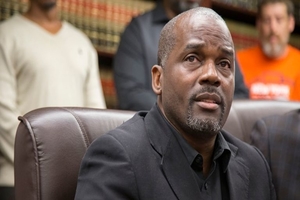 In 2016, Ronald Lanier, a retired black Nassau County correction officer, was allegedly assaulted by two white Garden City police officers, George Byrd and John Russell, who mistakenly took him for a black man who had allegedly shoplifted a purse from a village store. Lanier was shopping in a supermarket in Garden City Village—the village is 91% non-Hispanic White—when the two officers ordered him to put his hands behind his back, and threw him to the ground. Lanier claimed that the officers whispered in his ear, “You want to be a tough guy?” and then beat him on both sides of his ribs. He said that he complied with their orders and said, “I am on the job” — a phrase that law enforcement officers use to identify themselves to each other—and questioned why he was being detained, saying he had done nothing wrong. In 2016, Ronald Lanier, a retired black Nassau County correction officer, was allegedly assaulted by two white Garden City police officers, George Byrd and John Russell, who mistakenly took him for a black man who had allegedly shoplifted a purse from a village store. Lanier was shopping in a supermarket in Garden City Village—the village is 91% non-Hispanic White—when the two officers ordered him to put his hands behind his back, and threw him to the ground. Lanier claimed that the officers whispered in his ear, “You want to be a tough guy?” and then beat him on both sides of his ribs. He said that he complied with their orders and said, “I am on the job” — a phrase that law enforcement officers use to identify themselves to each other—and questioned why he was being detained, saying he had done nothing wrong.
The lawsuit claimed Ronald Lanier was assaulted both verbally and physically by police and sought at least $40 million in damages. The case recently resulted in a settlement that ordered the Village of Garden City and its police department to pay Lanier $150,000.
HOW DOES THIS CONNECT TO STRUCTURAL RACISM?
Many majority white neighborhoods on Long Island, such as Garden City, were originally populated through racial covenants and overt forms of housing discrimination that denied access to people of color. Today more subtle forms of housing discrimination persist and result in discrimination against non-whites. Since racially segregated neighborhoods create an unspoken understanding of who belongs and who does not belong, people of color are more likely to be treated with suspicion in majority white spaces.
Today Garden City Village is 0.1% black. This type of stark segregation most likely led the police officers to automatically assume that Lanier was the black suspect that they were searching for. This is why they did not bother to question him upon their arrival and instead resorted directly to force. Even when Lanier used a phrase to identify himself as a fellow police officer he was still treated as the suspect.
To read Dazio’s full article in Newsday see, “Papers: Garden City to pay man who alleged racial profiling”
March 2, 2018
The Newest U.S. Sentencing Commission Nominee is Anti-Prison Reform

The U.S. Sentencing Commission is a bipartisan agency. Its mission is to reduce sentencing disparities and establish sentencing guidelines for the judicial branch. Its aim is to foster effective and efficient crime policy.
William G. Otis was nominated to the agency by President Trump, but his appointment has been met with strong criticism from criminal justice advocates.
Otis has a track record of supporting stiff mandatory punishments for drug crimes and has made several derogatory racially-based remarks. Also, he has openly stated that he is against reducing sentencing for minor drug offenses.
William G. Otis stated that, "When Fifth Circuit Judge Edith Jones said at a University of Pennsylvania Law School talk that blacks and Hispanics are more violent than whites, a consortium of civil rights organizations filed a complaint. The complaint calls for stern discipline, on the grounds that the remarks were discriminatory and biased. So far as I have been able to discover, it makes no mention of the fact that they're true."
HOW DOES THIS RELATE TO STRUCTURAL RACISM
The belief that blacks and Latinos are more violent than whites is a myth. The report, “Race and Hispanic Origins of Victims and Offenders, 2012-2015”, done by the U.S. Department of Justice, proves this. The report found that of all 5,833,800 violent victimizations, 43.8% of the offenders are white, 22.7% are black, and 14.4% are Latino. The study shows that most intra-racial violent victimizations are done by white offenders. During 2012-15, the rate of white-on-white violent crime (12.0 per 1,000) was about four times higher than black-on-white violent crime (3.1 per 1,000).
The true inequity is in our criminal justice system. Historically, people of color have faced harsher sentencing than their white counterparts. Racial disparities in sentencing are consistent with a larger pattern of racial inequities that plague the U.S. criminal justice system. Communities with large amounts of people of color are policed heavier than predominately white communities, leading to an increase in arrests. Studies have even shown that black drivers are three times more likely to have their cars searched by police than white drivers.
A report on Jury Selection done by Michigan State University College of Law showed that North Carolina prosecutors were excluding black people from juries in capital cases at twice the rate of other jurors, even though studies show that excluding black people from juries can influence deliberations and verdicts. The lack of people of color in jury selections negatively impacts criminal trials, as does some practices occurring in prosecuting and sentencing. For example, Black people are more likely to be offered a plea deal that includes prison time than white people. The United States Sentencing Commission ‘s report, “Demographic Differences in Sentencing: An Update to the 2012 Booker Report” found that black men who commit the same crimes as white men receive federal sentences that are an average of 20 percent longer for the same offense.
Due to his support of harsh mandatory punishments, unfounded views on race related criminal activity, and lack of accurate knowledge, nominating William G. Otis to the U.S. Sentencing Commission is a step in the wrong direction. If allowed to join the United States Sentencing Commission, based on previous statements and actions, he will attempt to create further inequality in a justice system that is already suffering from racial disparity.
For more on William G. Otis's nomination , see "Trump Pick For Sentencing Commission Has History Of Racially Charged Remarks"
References
https://www.npr.org/2018/03/02/590236153/trump-pick-for-sentencing-commission-has-history-of-racially-charged-remarks
https://www.bjs.gov/content/pub/pdf/rhovo1215.pdf
https://www.ussc.gov/sites/default/files/pdf/research-and-publications/research-publications/2017/20171114_Demographics.pdf
January 30, 2018
Baltimore Police Protocol: Keep Toy Guns Around Just in Case You Shot an Unarmed Person

Baltimore Police Department has been under intense public scrutiny following the murder of Freddie Gray by Baltimore Police Officers. All charges against the officers were eventually dropped but the Baltimore Police Department is back in the headlines for their latest scandal.
Recently, a group of Baltimore cops were accused of selling confiscated drugs, robbing drug dealers, and much more.
Detective Marcus Taylor, was found with a fake gun in his patrol car. During interrogation, one of his team members explained why. Detective Maurice Ward, one of the officers implicated in the corruption charges said that his sergeant, Wayne Jenkins, told his team members to carry toy guns in case they found themselves in a situation where an unarmed suspect was shot and they needed to plant evidence.
In April of 2016, a 13-year-old boy was shot by Baltimore police and a replica gun was found on the scene. With the recent revelations, many are questioning the validity of evidence presented by Baltimore police officers.
HOW DOES THIS RELATE TO STRUCTURAL RACISM
African Americans make up only 13% of the population but are 35% of the unarmed people that were killed by police in 2017.
Many times, the police blame their deadly response on the actions of their victims but if police officers are manufacturing evidence, the public may never know the truth behind hundreds of fatal police shootings.
According to the report, "Mapping Police Violence", most unarmed people killed by police in 2017 were people of color. Black people were more likely to be killed by police, more likely to be unarmed, and less likely to be threatening someone when killed.
12 –year-old Tamir Rice was killed by a police officer who said he thought Rice had a weapon. The weapon turned out to be a toy gun but now that we have uncovered this deplorable police tactic, more questions are being raised.
This is not the first time cops have been caught planting evidence. Another Baltimore officer, Richard A. Pinheiro , was charged with misconduct and fabricating evidence after his body camera caught him planting drugs in a nearby field.
For more on this see, " Baltimore Cops Kept Toy Guns to Plant Just in Case They Shot an Unarmed Person".
January 8, 2018
New Jersey Bans the Book, “The New Jim Crow”
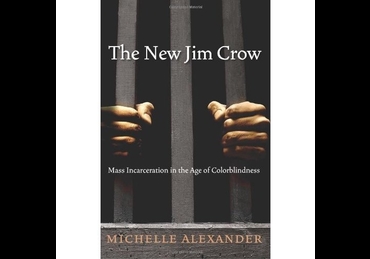
After being called out by social justice advocates, the New Jersey Department of Corrections reversed their ban on, “The New Jim Crow: Mass Incarceration in the Age of Colorblindness”. In the book, author Michelle Alexander explores how today’s criminal justice system is similar to the old “Jim Crow”, which systemically and structurally promoted disparate treatment, sentencing, and outcomes that disadvantage black and brown people. The ban was previously implemented in at least two New Jersey prisons.
HOW DOES THIS RELATE TO STRUCUTRAL RACISM?
The NJ Department of Corrections’ ban was a form of censorship that kept inmates oblivious to systematic inequities and injustices that directly impact them. One has to wonder why a book chronicling structural racism and oppression was banned but Adolf Hitler’s autobiography is permitted. A recent New York Times article says that, “According to data from The Sentencing Project, a prison reform advocacy group, New Jersey has the highest disparity between black and white inmates of any state, with 12.2 black inmates for every white inmate.”
Inmates deserve the right to educate themselves on issues that affect them. Laws and policies have disproportionately impacted people of color throughout history. Campaigns like the War on Drugs and Stop-and-Frisk have targeted African American and Latino communities, leading to the mass incarceration of more than a hundred-thousand people of color. Felony convictions result in socioeconomic disadvantages that include the inability to access social services, limited job opportunities, and political disenfranchisement due to the loss of voting rights. The racial disparities produced in the prison industrial complex are a reflection of structural racism. Banning a book that sheds light on this injustice is itself a compounding result of existing structural racism, i.e. structurally denying black and brown inmates of this knowledge.
For more on the book banning see, "Ban on Book About Mass Incarceration Lifted in NJ Prisons After ACLU Protest".
December 20, 2017
GOP Tax Plan
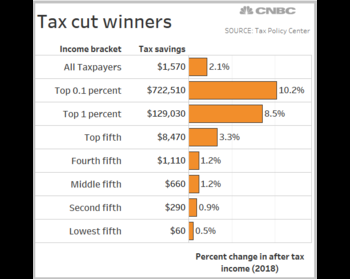 On December 20, 2017, Congress passed the most extensive revisions to the tax code in the last thirty years. The new tax code will ease the tax burden on corporations and the wealthy but not for low and middle-income Americans. It permanently cuts corporate tax rates from 35 percent to 21 percent. Unlike the permanent business tax cuts, individual tax cuts will expire in 2025. According to the Tax Policy Center, Americans in the lowest earning fifth of the population would see their income increase by a fraction of a percent while Americans in the top-earning fifth would see an increase of nearly 3 percent.Obamacare mandates that citizens must purchase insurance or pay a penalty fee, unless they qualify for a limited number of exemptions. This mandate was put in place so that everyone would have access to affordable health insurance. On December 20, 2017, Congress passed the most extensive revisions to the tax code in the last thirty years. The new tax code will ease the tax burden on corporations and the wealthy but not for low and middle-income Americans. It permanently cuts corporate tax rates from 35 percent to 21 percent. Unlike the permanent business tax cuts, individual tax cuts will expire in 2025. According to the Tax Policy Center, Americans in the lowest earning fifth of the population would see their income increase by a fraction of a percent while Americans in the top-earning fifth would see an increase of nearly 3 percent.Obamacare mandates that citizens must purchase insurance or pay a penalty fee, unless they qualify for a limited number of exemptions. This mandate was put in place so that everyone would have access to affordable health insurance.
Obamacare stabilized the health insurance market by increasing the amount of people who bought health insurance. The healthy people who purchased insurance but did not use it subsidized the sick. Obamacare prohibited health insurance companies from overcharging or denying sick consumers but without Obamacare it is not likely that insurance companies will continue to charge affordable rates due to an expected decrease in insurance buyers. Although the Obamacare subsidy structure will not be affected by the tax bill, those who make too much to qualify for assistance may find higher insurance rates and will most likely decline to purchase insurance. This will lead insurance companies to revert back to overcharging or denying the sick, in order to make a profit. Additionally, the value of tax credits that affordable housing developers use will fall, eventually causing fewer units to be built and limiting the availability of affordable housing.
HOW DOES THIS RELATE TO STRUCTURAL RACISM?
America is increasingly divided along economic lines and, unfortunately, policies like this widen the disparity. Policies that favor affordable housing and health insurance are being replaced by policies that drive structural inequalities. Healthcare disparities exist between different racial and economic groups and repealing the Obamacare mandate will cause many who most need it to lose their healthcare. Likewise, the lack of affordable housing will further segregate neighborhoods and schools. Overall, the new tax code perpetuates racial group inequity.
For more on the GOP Tax Plan, see " How the GOP Tax Plan Scrooges Middle Class, Retired, and Poor " .
June 5, 2017
Racial Dot Map
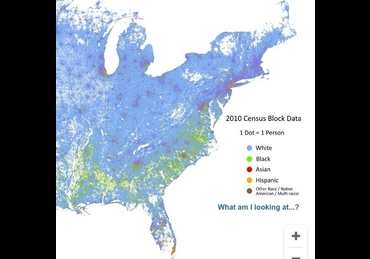 A demographic researcher used 2010 Census data to create a map of modern-day America and its racial patterns. Each dot represents one person, and each color corresponds with a race. Explore the map below. A demographic researcher used 2010 Census data to create a map of modern-day America and its racial patterns. Each dot represents one person, and each color corresponds with a race. Explore the map below.
HOW DOES THIS CONNECT TO STRUCTURAL RACISM?:
This visual shows the stark reality of an America that is still intensely segregated by race.
For more on the Racial Dot Map, see "Dot Map"
April 19, 2017
Senator Larry Taylor Remarks
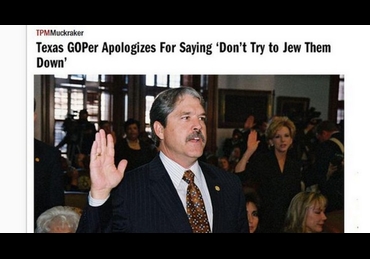
During a hearing of the Joint Legislative Committee on Windstorm Insurance, Texas state representative Larry Taylor had harsh words for insurance companies that didn't pay the claims of disaster victims in a timely manner. "Your job is to pay the client...don't nitpick. Don't try to Jew them down".
HOW DOES THIS CONNECT TO STRUCTURAL RACISM?:
Racialized language and stereotypes that are normalized in everyday conversations perpetutate racial biases and can led to actual forms of discrimination and violence.
For more Taylor's Remarks see, " Florida State Senator Drops Racist, Profanity-Laden Rant on Colleagues "
|
|

 Botham Shem Jean, a risk assessment associate at PrincewaterhouseCoopers, was shot and killed in his home by off-duty Officer Amber Guyger. While much is still unknown, many are outraged by the way the media and police have been handling the case so far.
Botham Shem Jean, a risk assessment associate at PrincewaterhouseCoopers, was shot and killed in his home by off-duty Officer Amber Guyger. While much is still unknown, many are outraged by the way the media and police have been handling the case so far. 

 In 2016, Ronald Lanier, a retired black Nassau County correction officer, was allegedly assaulted by two white Garden City police officers, George Byrd and John Russell, who mistakenly took him for a black man who had allegedly shoplifted a purse from a village store. Lanier was shopping in a supermarket in Garden City Village—the village is 91% non-Hispanic White—when the two officers ordered him to put his hands behind his back, and threw him to the ground. Lanier claimed that the officers whispered in his ear, “You want to be a tough guy?” and then beat him on both sides of his ribs. He said that he complied with their orders and said, “I am on the job” — a phrase that law enforcement officers use to identify themselves to each other—and questioned why he was being detained, saying he had done nothing wrong.
In 2016, Ronald Lanier, a retired black Nassau County correction officer, was allegedly assaulted by two white Garden City police officers, George Byrd and John Russell, who mistakenly took him for a black man who had allegedly shoplifted a purse from a village store. Lanier was shopping in a supermarket in Garden City Village—the village is 91% non-Hispanic White—when the two officers ordered him to put his hands behind his back, and threw him to the ground. Lanier claimed that the officers whispered in his ear, “You want to be a tough guy?” and then beat him on both sides of his ribs. He said that he complied with their orders and said, “I am on the job” — a phrase that law enforcement officers use to identify themselves to each other—and questioned why he was being detained, saying he had done nothing wrong.


 On December 20, 2017, Congress passed the most extensive revisions to the tax code in the last thirty years. The new tax code will ease the tax burden on corporations and the wealthy but not for low and middle-income Americans. It permanently cuts corporate tax rates from 35 percent to 21 percent. Unlike the permanent business tax cuts, individual tax cuts will expire in 2025. According to the Tax Policy Center, Americans in the lowest earning fifth of the population would see their income increase by a fraction of a percent while Americans in the top-earning fifth would see an increase of nearly 3 percent.Obamacare mandates that citizens must purchase insurance or pay a penalty fee, unless they qualify for a limited number of exemptions. This mandate was put in place so that everyone would have access to affordable health insurance.
On December 20, 2017, Congress passed the most extensive revisions to the tax code in the last thirty years. The new tax code will ease the tax burden on corporations and the wealthy but not for low and middle-income Americans. It permanently cuts corporate tax rates from 35 percent to 21 percent. Unlike the permanent business tax cuts, individual tax cuts will expire in 2025. According to the Tax Policy Center, Americans in the lowest earning fifth of the population would see their income increase by a fraction of a percent while Americans in the top-earning fifth would see an increase of nearly 3 percent.Obamacare mandates that citizens must purchase insurance or pay a penalty fee, unless they qualify for a limited number of exemptions. This mandate was put in place so that everyone would have access to affordable health insurance. A demographic researcher used 2010 Census data to create a map of modern-day America and its racial patterns. Each dot represents one person, and each color corresponds with a race. Explore the map below.
A demographic researcher used 2010 Census data to create a map of modern-day America and its racial patterns. Each dot represents one person, and each color corresponds with a race. Explore the map below.